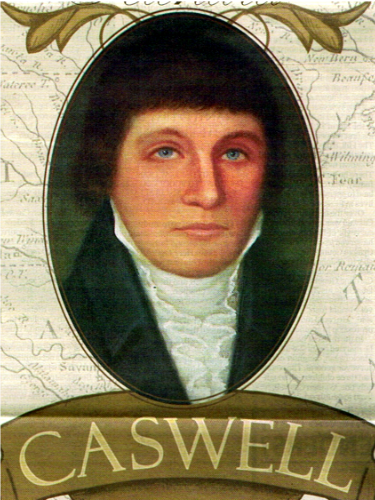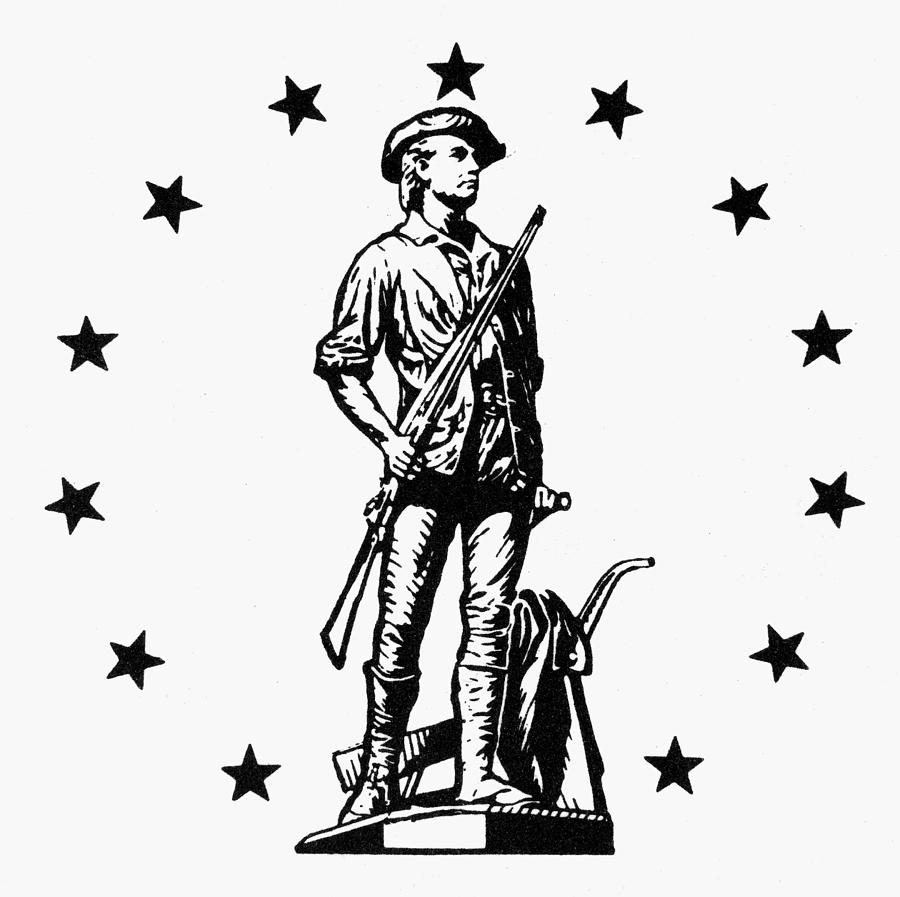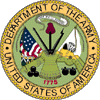Richard Caswell is honored on the Walk of Honor as the first Governor of North Carolina and as being the first Commander of the Militia, predecessor of today’s National Guard. He was born in Harford County, Maryland, on August 3, 1729. After finishing school at the age of 16, he and his older brother traveled to New Bern, North Carolina. He was appointed as an apprentice to James Mackilwean, Surveyor General. Caswell learned the surveying trade from Mackilwean in area called Adkins. Adkins later became the town of Kingston, which still later, thanks to Caswell, was renamed Kinston.
In 1748 Caswell was appointed Deputy Clerk of Johnston County. He was appointed as Deputy Surveyor of North Carolina in 1750. During this tenure he was granted an 85 acre tract of land that included much of the present day Kinston. He married the daughter of Mackilwean on April of 1752. At her death in 1775, she had born 3 children. She is buried in the Caswell Family Cemetery, located at the Richard Caswell Memorial Park. He married Sarah Herittage on June 20, 1758. Sarah bore Caswell eight more children.
Caswell’s military career began in 1753 while serving as a member of the North Carolina Assembly as a representative. He was appointed a lieutenant in the Johnston County Militia. In May 1771. During the year 1758, Caswell co-sponsored a bill to divide Johnston County and form Dobbs County. Caswell, now as Commander with the Rank of Colonel, in the Dobbs County Militia, led his troops to Alamance where 3400 Regulators were rebelling against Colonial Governor William Tryon. Colonel Caswell and his troops were given credit for victory. Today this area is a North Carolina State Park known as the Alamance Battle Ground.
After the Colonies declared independence from Great Britain, Richard Caswell was appointed to command the newly formed New Bern District Battalion. In February 1776, he led Patriot forces to victory in the Battle of Moore’s Creek. Later that year, Caswell was appointed as chairman of a committee to draw up a state constitution. After the adoption of the constitution, he was appointed as acting governor and was elected as North Carolina’s first governor in April of 1777. He served in office until 1780. During the summer 1777, he offered his service to General George Washington. He was appointed Major General of the North Carolina Militia in May of 1780. He then marched to Camden, South Carolina to join Continental forces. There was a sounding defeat of the Continental force and Caswell was replaced. Caswell resigned from the Militia.
His resignation lasted a very short time. When the British forces invaded North Carolina, Caswell was again appointed to the Rank of Major General. He continued his military service, but led several unsuccessful efforts against the King’s forces. In April of 1882 General Caswell was ordered to raise a force of 500 men and proceed to New Bern to protect the population. After this mission, Major General Richard Caswell’s military career came to an end.
He was again elected as Governor in 1784 and served until 1788. He was elected as speaker of the Senate on November 3, 1789. Caswell suffered a stroke and died on November 10, 1789 at the age of sixty. At the time of his death, he had spent all funds and property that he had acquired. His body was sent to Kinston and he was buried in the family cemetery at what is presently known as The Caswell Memorial State Site.
Note: The Walk has used as reference a book entitled “The First of Patriots and Best of Men”: Richard Caswell in Public Life. The book was originally written in 1930 by Clayton Brown Alexander and edited in 2007 by W. Keats Sparrow. It was published by the Lenoir County Colonial Commission, Kinston North Carolina in 2007. The book is available at the Chamber of Commerce and the Community Council of The Arts, Kinston, North Carolina.


